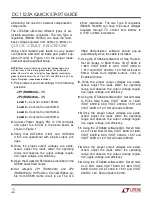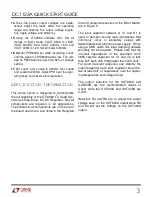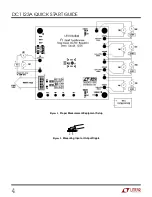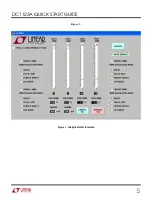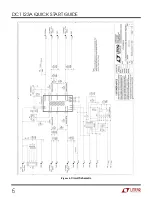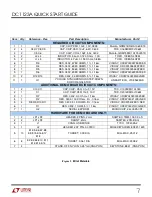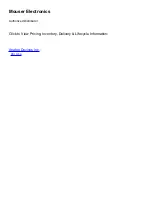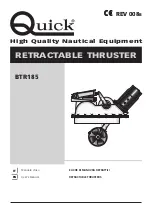
DC1123A QUICK START GUIDE
3
14.
Once the proper output voltages are estab-
lished, adjust the loads within the operating
range and observe the output voltage regula-
tion, ripple voltage, and efficiency
15.
Using the LTC3562 software GUI. Set all
modes to Burst mode, VOUT 600A to 1.82V,
VOUT 600B to 3.3V, VOUT 400A to 1.51V and
VOUT 400B to 1.2V. Set all loads to 50mA.
16.
Monitor POR600A pin while increasing Load1
until the signal on POR600A goes low. The volt-
age on P600A will be less than 92% of voltage
setting.
17.
Set Load1 and Load2 to 450mA. Set Load3
and Load4 to 300mA. Adjust PS1 over the oper-
ating range and observe line regulation.
APPLICATION INFORMATION
This demo circuit is designed to demonstrate
the full capability of the LTC3562 I
2
C Quad Syn-
chronous Step-Down DC-DC Regulator. Not all
components are required in all applications.
The critical circuit components are on the top of
the board near the IC and listed in the Required
Circuit Components section of the Bill of Materi-
als, in Figure 5.
The input capacitor network of C1 and R1 is
used to dampen source lead inductances that
commonly occur in laboratory setups with
twisted leads and a bench power supply. When
using a USB cable this input damping network
will likely not be required. Please note that the
in-circuit capacitance of the specified 10uF,
0805 ceramic capacitor for C1 and C2 is less
than 5uF each with VIN greater than 4.25 Volts.
For good transient response and stability the
output capacitor each buck regulator should re-
tain at least 4uF of capacitance over the operat-
ing temperature and voltage range.
The output inductors for the OUT600A and
OUT600B are the recommended values of
3.3uH while the OUT400A and OUT400B are
4.7uH.
Resistors R4 and R6 are to adjust the output
voltage seen on the OUT600A output while R3
and R4 will set the voltage on the OUT400A
output.


